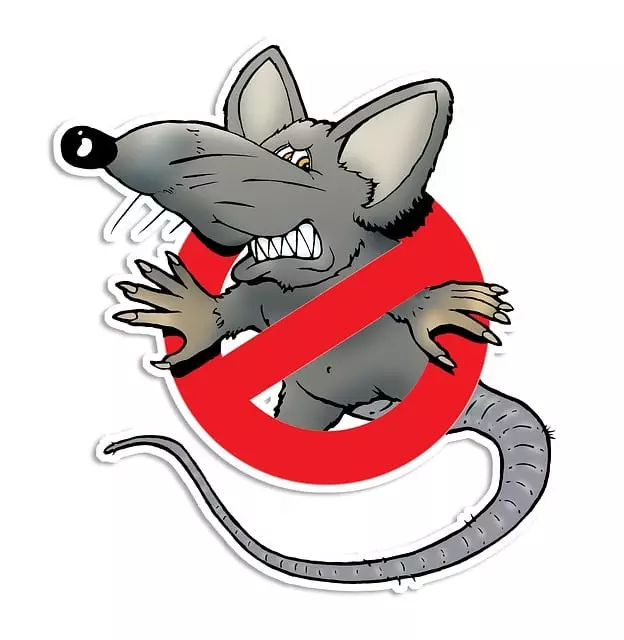Rodent infestations require tailored strategies focusing on rats and mice, common invaders attracted to food, shelter, and water. Identify entry points through meticulous inspections of foundations, windows, vents, and doors to seal them with steel wool, caulk, or mesh. Effective Rodent Control involves a strategic hazard assessment, evaluating risks like disease transmission and structural damage. Customized plans consider unique settings and behaviors, using eco-friendly methods like essential oils, ultrasonic repellers, and motion-activated sprinklers. Traps, repellents, and preventative measures like sealing entry points and secure food storage create multi-layered defenses through Integrated Pest Management (IPM). Regular maintenance including inspections, trapping, and treatment is crucial for proactive prevention and elimination of rodent infestations.
“Rodent infestations can pose significant challenges, impacting homes and businesses alike. Understanding these common pests and their behaviors is the first step towards effective rodent control. This comprehensive guide delves into every aspect of managing rodents, from identifying entry points to implementing tailored solutions. We explore non-toxic methods, safe traps and repellents, and essential prevention strategies for a rodent-free environment. Discover how to assess risks, maintain protection, and prevent future infestations with our expert tips on efficient rodent control.”
Understanding Rodent Infestations: Common Pests and Their Behavior

Rodent infestations can be a significant concern for both residential and commercial properties, often requiring tailored rodent control plans. Understanding the common rodents responsible for these infestations is crucial in developing effective strategies. Rats and mice are the most prevalent invaders, known for their adaptability and ability to thrive in various environments. These creatures are particularly drawn to food sources, shelter, and water, making them persistent intruders.
Their behavior plays a significant role in how they invade and navigate spaces. Rodents are excellent climbers and can gain entry through tiny openings, pipes, and vents. They are active during the night, making their presence often undetected until signs of damage or droppings appear. Recognizing these behaviors is essential when creating a rodent control plan to ensure success and prevent future infestations.
Identifying Entry Points: Locating Potential Access Areas

Identifying where rodents might enter your space is a crucial step in effective rodent control. These cunning critters can squeeze through tiny gaps, so it’s essential to conduct a thorough inspection of your property. Start by visually scanning exterior walls, floors, and ceilings for any visible signs of damage or gaps. Common entry points include cracks in foundations, broken windows, open vents, and loose-fitting doors. Pay close attention to areas where utilities enter the building, as these points often go unnoticed but provide easy access for rodents.
Use tools like flashlights and mirrors to reach hard-to-see places, and consider using pet or wildlife cameras to capture evidence of rodent activity. Once potential access areas are identified, take measures to seal these entry points with materials like steel wool, caulk, or mesh. This physical barrier will significantly deter rodents from finding their way inside, creating an effective first line of defense in your rodent control plan.
Hazard Assessment: Risks and Impact of Rodent Presence

Rodent presence in any environment can pose significant risks and have detrimental impacts, making effective rodent control crucial for maintaining health and safety standards. A thorough hazard assessment is the first step in developing a comprehensive rodent control plan. This process involves identifying potential entry points, assessing the extent of existing infestations, and understanding the types of damage rodents can cause.
Hazards associated with rodents include the transmission of diseases like hantavirus and salmonellosis, structural damage to buildings due to gnawing, contamination of food supplies, and the disruption of ecosystems in outdoor settings. By evaluating these risks, professionals can tailor rodent control strategies to specific needs, ensuring effective management while minimizing potential harm to humans, pets, and the environment.
Customized Solutions: Tailoring Strategies for Different Environments

In the realm of rodent control, one-size-fits-all approaches rarely prove effective. That’s why our experts design customized solutions, tailored to the unique needs and challenges presented by each environment. Whether it’s a residential property, commercial facility, or agricultural setting, we understand that rodents behave differently under varying conditions.
By carefully assessing factors like habitat, food sources, and existing control measures, we develop strategic plans that target specific rodent species and their behaviors. This personalized approach ensures more successful and sustainable rodent control, delivering peace of mind for our clients and minimizing environmental impact.
Non-Toxic Methods: Safe and Eco-Friendly Approaches to Control

In today’s world, where environmental consciousness is at an all-time high, many homeowners and businesses are seeking eco-friendly solutions for rodent control. Non-toxic methods offer a safer alternative to traditional pest control products, ensuring that both people and pets remain unharmed while effectively managing rodent populations. These approaches leverage natural repellents, habitat modification, and innovative technologies to create an environment that discourages rodents without resorting to harmful chemicals.
By employing these safe and sustainable practices, you can achieve long-term rodent control while minimizing the environmental impact. From using essential oils known for their strong scents that deter rodents to altering the physical layout of your space to limit access points, there are numerous strategies available. Additionally, modern devices such as ultrasonic repellers and motion-activated sprinklers provide effective non-lethal solutions, ensuring a peaceful coexistence with these small creatures while maintaining a clean and healthy living or working environment.
Implementing Traps and Repellents: Effective Tools in Rodent Management

Implementing traps and repellents is a strategic move in rodent management, offering effective solutions for those seeking robust rodent control. These tools play a pivotal role in both short-term and long-term strategies to keep rodents at bay. For immediate results, live traps are invaluable. They capture rodents humanely, allowing for safe removal from the premises. Alternatively, lethal traps provide quick resolution but require careful handling to prevent disease spread.
Repellents offer a non-lethal approach, deterring rodents through scent and taste. While not providing instant removal, they significantly reduce rodent activity in treated areas. Combining these methods creates a multi-layered defense, disrupting rodent habitats and encouraging them to seek alternative, less inviting environments. This integrated pest management (IPM) strategy ensures sustainability and effectiveness in the long war against rodents, making it an essential component of any comprehensive rodent control plan.
Prevention Measures: Long-term Solutions for Rodent-Free Living

Preventative measures play a pivotal role in achieving and maintaining rodent-free living. Implementing robust barriers is key; this includes sealing entry points like gaps in walls, floors, and ceilings with steel wool or concrete. Securely storing food items in airtight containers and eliminating potential water sources also acts as powerful deterrents. Regular cleaning and maintenance are essential, focusing on removing debris and clutter that rodents find appealing.
Additionally, pet owners should ensure their animals’ spaces are rodent-proof, using heavy-duty mesh to protect against burrowing. Traps and poison may offer short-term relief, but they’re not sustainable solutions. Instead, a comprehensive approach combining these preventative measures offers long-term protection, ensuring a safer and healthier environment for both residents and pets.
Regular Maintenance: Ensuring Continuous Protection against Infestations

Regular maintenance is a critical component of any effective rodent control plan. It involves ongoing inspections, trapping, and treatment to prevent and eliminate rodents from entering and infesting spaces. By establishing a consistent maintenance schedule, property owners and managers can ensure continuous protection against infestations. Regular checks allow for early detection of potential entry points, signs of activity, or new invasions, enabling prompt action to mitigate risks.
Maintaining a clean and secure environment is key to preventing rodent attraction. This includes removing food sources, sealing entry points, and implementing sanitary practices. Professional services can provide tailored advice and regular treatment options, such as setting traps, applying repellents, or using baited systems, to disrupt rodent activity and deter future infestations. Continuous maintenance ensures that any new rodents trying to enter are caught quickly, minimizing damage and health risks associated with rodent presence.
